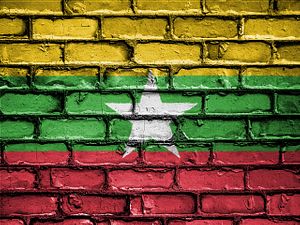By Prashanth Parameswaran
Last week, the United States officially announced a repatriation of what may be remains of service personnel that had been lost in action in Myanmar during World War II. The development spotlighted an aspect of ongoing U.S.-Myanmar collaboration that has often flown under the radar amid recent strains in bilateral ties and challenges and uncertainties for the relationship.
While the United States initially moved to normalize ties with Myanmar under former U.S. President Barack Obama in the wake of reforms that had begun to take shape in the Southeast Asian country, developments over the past few years, in particular the Rohingya crisis and documented human rights violations and abuses involving the Myanmar military, have since led Washington to recalibrate its approach. But while aspects of relations that grab the headlines – such as the imposition of targeted U.S. sanctions – are often in focus, some aspects of collaboration in fact still continue as they are rooted in wider shared interests.
One of the aspects of U.S.-Myanmar relations is cooperation with respect to the recovery of the remains of service personnel who were lost in action in Myanmar during World War II. While this collaboration often flies below the radar, it is far from inconsequential: by one estimate, there are 505 U.S. service members still unaccounted for in Myanmar – a fraction of over 72,000 Americans unaccounted for from World War II per the Defense POW/MIA Accounting Agency (DPAA) – and the remains of 23 have reportedly been identified after three recovery missions carried out in 2003 and 2004 as well as nine additional ones since 2013.
Last week, this aspect of U.S.-Myanmar cooperation was in the headlines again with another instance of repatriation of service personnel believed to be missing in action in Myanmar from World War II. Per the U.S. Embassy in Myanmar, the remains from the Salingyi areas of Myanmar’s central Sagaing region were repatriated at a ceremony at Mandalay International Airport after being recovered in a mission carried out by the Defense POW/MIA Accounting Agency of the U.S. Department of Defense. It was the second such repatriation ceremony held in Myanmar.
The U.S. embassy statement released on March 12 said that the possible remains, part of ongoing findings that date back to last year, are believed to be associated with a B-25G aircraft with seven personnel onboard during the time of loss in February 1944. The wreckage was located in a 1946 investigation but the grave site remained unaccounted for. The repatriated remains were transported back to the DPAA Laboratory in Hawaii for further analysis and potential verification.
It is unclear exactly what further analysis and verification will turn up: the embassy statement noted that DPAA’s forensics labs have not yet confirmed the identity of any service members associated with osseous material repatriated from Myanmar in 2019. And, of course, such instances of collaboration do not detract from the broader challenges and uncertainties that exist in the U.S.-Myanmar relationship, be it rights concerns or political changes as both countries undergo elections later this year amid a global pandemic and continued economic uncertainty. Nonetheless, the development was an important reminder of the collaboration that still continues between the countries even amid differences and strains in wider ties.

No comments:
Post a Comment